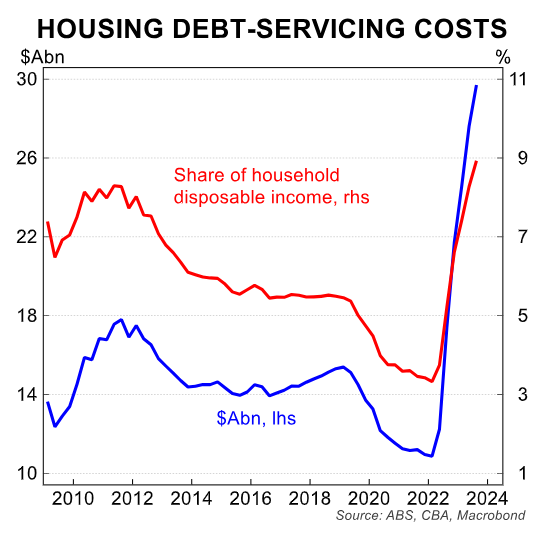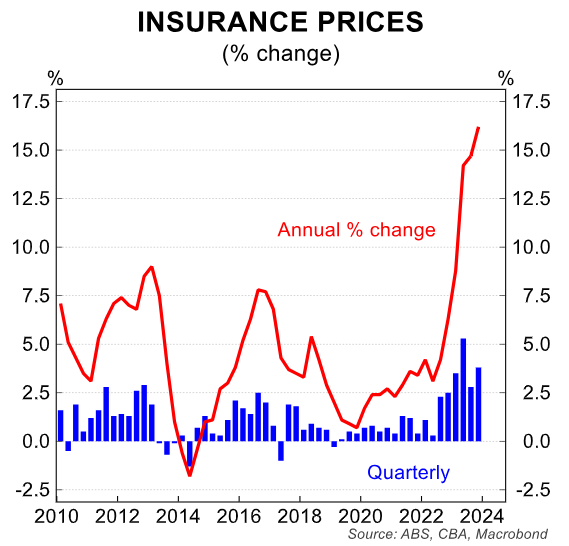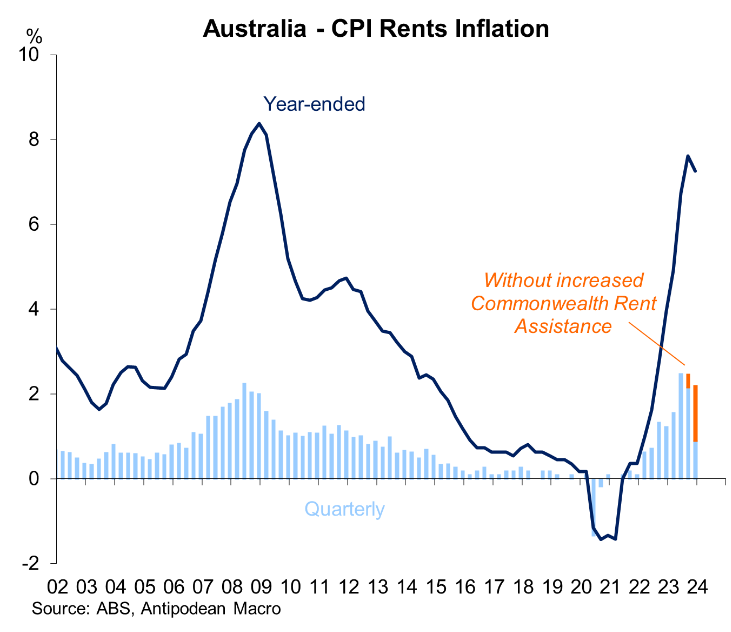The Australian Bureau of Statistics (ABS) on Wednesday released its cost-of-living indices for the December quarter, which showed that employee households are being squeezed hardest.

Source: ABS
Employee household cost of living rose by 6.9% in the 2023 calendar year, well above the 4.1% rise in CPI inflation.
The ABS noted that the outsized rise in employee cost-of-living was driven by “increases in mortgage interest charges and insurance”.
“Mortgage interest charges rose due to the continued rollover of expired fixed-rate to higher variable rate mortgages, as well as banks passing on the Reserve Bank of Australia’s cash rate rise in November 2023 to variable rate home loans”, the ABS noted.

“Insurance prices rose with higher premiums across motor vehicle, house and home contents insurance reflecting higher reinsurance, natural disaster and claims costs”.

Soaring rental costs have also driven up living costs, especially for those reliant on government transfer recipients; albeit were moderated by the increases to Commonwealth Rent Assistance:

Employee households are also getting squeezed hard by surging income tax payments, which have risen alongside mortgage payments:

The rise in the cost of living can be attributed, in large part, to ‘Alboflation’ – i.e., juicing demand by operating an immigration program well in excess of the supply-side of the economy (particularly the housing market).
Alboflation is directly increasing the cost of living and the CPI (for example, through rents), and it has forced the RBA to hike interest rates higher than otherwise to limit demand and bring inflation down.
The one segment of the population that has been relatively unaffected are self-funded retirees, who tend to own their homes outright and are not getting hammered by mortgage repayments, rents, and personal income taxes.
They experienced the lowest rise in cost of living (i.e. 4.0%) in 2023, which was actually below the headline inflation rate (4.1%).

